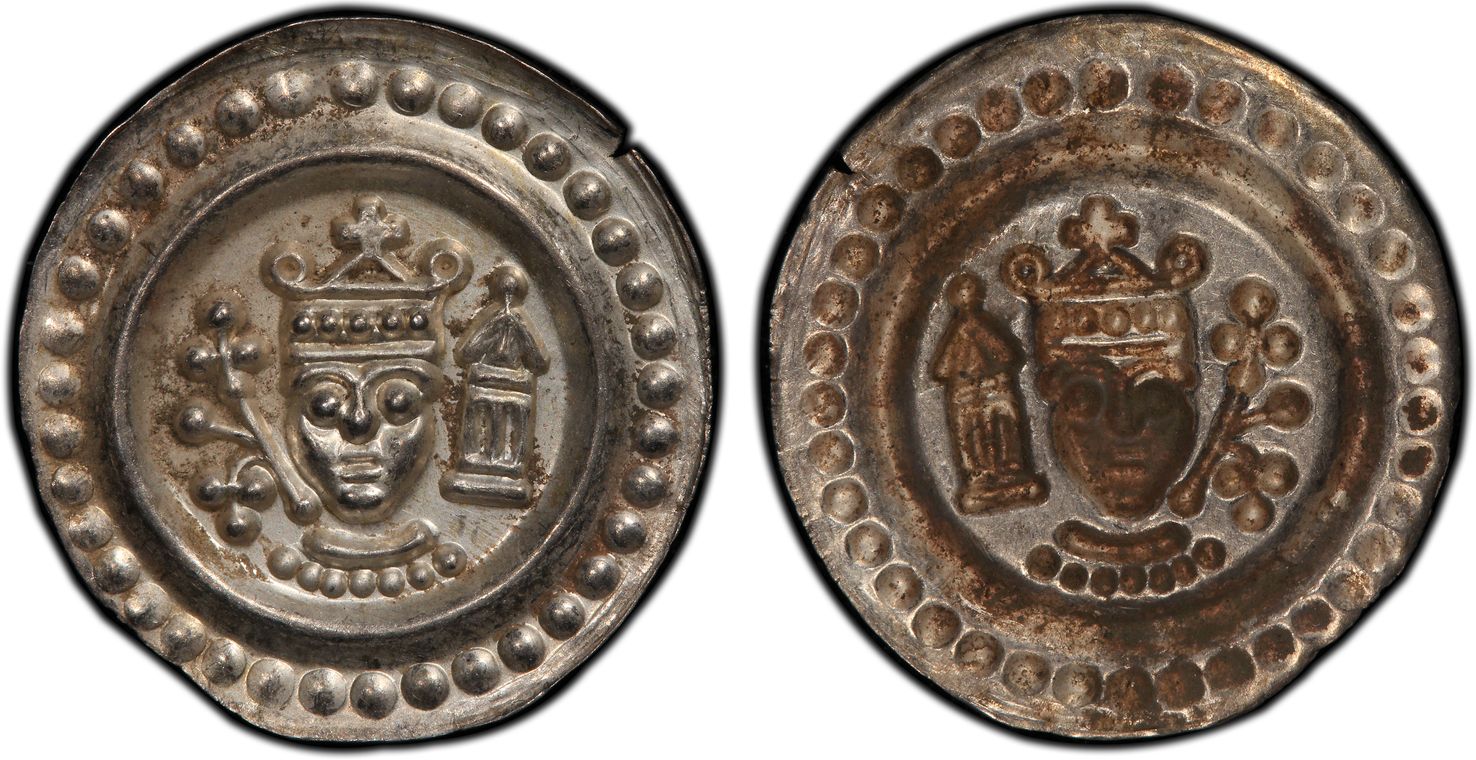Newp Bracteate!
 Bob13
Posts: 1,596 ✭✭✭✭✭
Bob13
Posts: 1,596 ✭✭✭✭✭
I've seen these medieval one-side pennies in catalogues, but have never owned one until now. Sometimes the representations seem rather crude, but this one caught my eye.
However, I was not prepared for how thin and fragile these "coins" are! It showed up in a cointainer and is as thin and flimsy as tin foil! It is a bit rough around the edges, but it is beautiful in terms of the design and color (I'll try to get some better pics later).


MAINZ, ARCHBISHOP Heinrich I von Harburg, 1142-1153. Bracteate, Erfurt. 0.42g
Bust of Saint Martin fv with crosier and cross behind arch between two crenellated towers, on the sides EPPES - FOR - DI, below the archbishop r. with raised hands, above HE y RC, l. Tower.
Here is some info about bracteates from Wikipedia.
Silver bracteates (in German Brakteat, also called "hollow pennies": Hohlpfennige) are different from the migration period bracteates. They were the predominant regional coinage type minted in German-speaking areas (with the exception of Rhineland, Westphalia and the Middle Rhine region) beginning at around 1130 in Saxony and Thuringia and lasted well into the 14th century. From a currency point of view, bracteates were a typical "regional penny" currency of the time.
Medieval silver bracteates are one-sided, embossed pennies from thin silver sheet, with a diameter of 22 to 45 mm. The coin image appears in a high relief, while the back remains hollow. The large area left much room for artistic representations. Usual were three denominations, a two-penny (Blaffert) with elaborate image, a one-penny (Hohlpfennig) with coarse image and hollow coins worth half a penny (Scherf).
The bracteates were usually called back regularly, about once or twice a year, and must be exchanged for new coins (Renovatio Monetae). For example, receiving three new coins for four old coins. The withheld 4th coin was called strike money and was often the only tax revenue of the coin mint-master. This system worked like a demurrage: People wouldn't hoard their coins, because they lost their value. So, this money was used more as a medium of exchange than for storing value. This increased the velocity of money and stimulated the economy.
This disruption disturbed the business interests of all those who were involved in the then money economy, namely the merchants who dominated in the German city leagues. The city leagues then introduced from 1413 a so-called Ewiger Pfennig (eternal penny).
Anyone have any others to share?
My current "Box of 20"
Comments
Here’s mine, a 1/2 Bracteate from when Harald Bluetooth tried to implement a fiat currency system that didn’t take.
My coin is double-sided but perhaps need not have been. It’s around .36g, if memory serves.
How does one get a hater to stop hating?
I can be reached at evillageprowler@gmail.com
From the German city of Ulm ...

My World Coin Type Set
Thanks @EVillageProwler and @PBRat for posting! I guess not too much interest in these. Again, I can't believe that these could ever be used for day to dat purchases - just seem too fragile.
My current "Box of 20"
Interesting how they were used. In some ways they seem similar to depression scrip issues of the 1930's.
Those are cool!